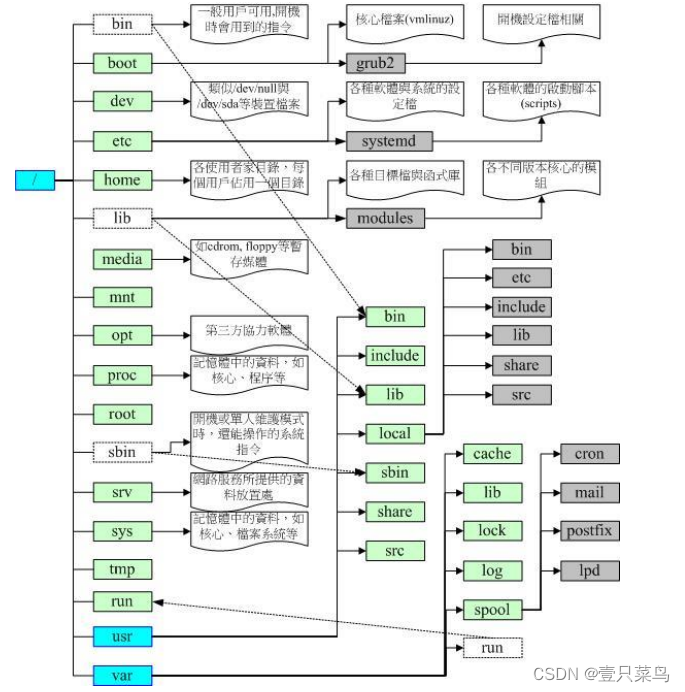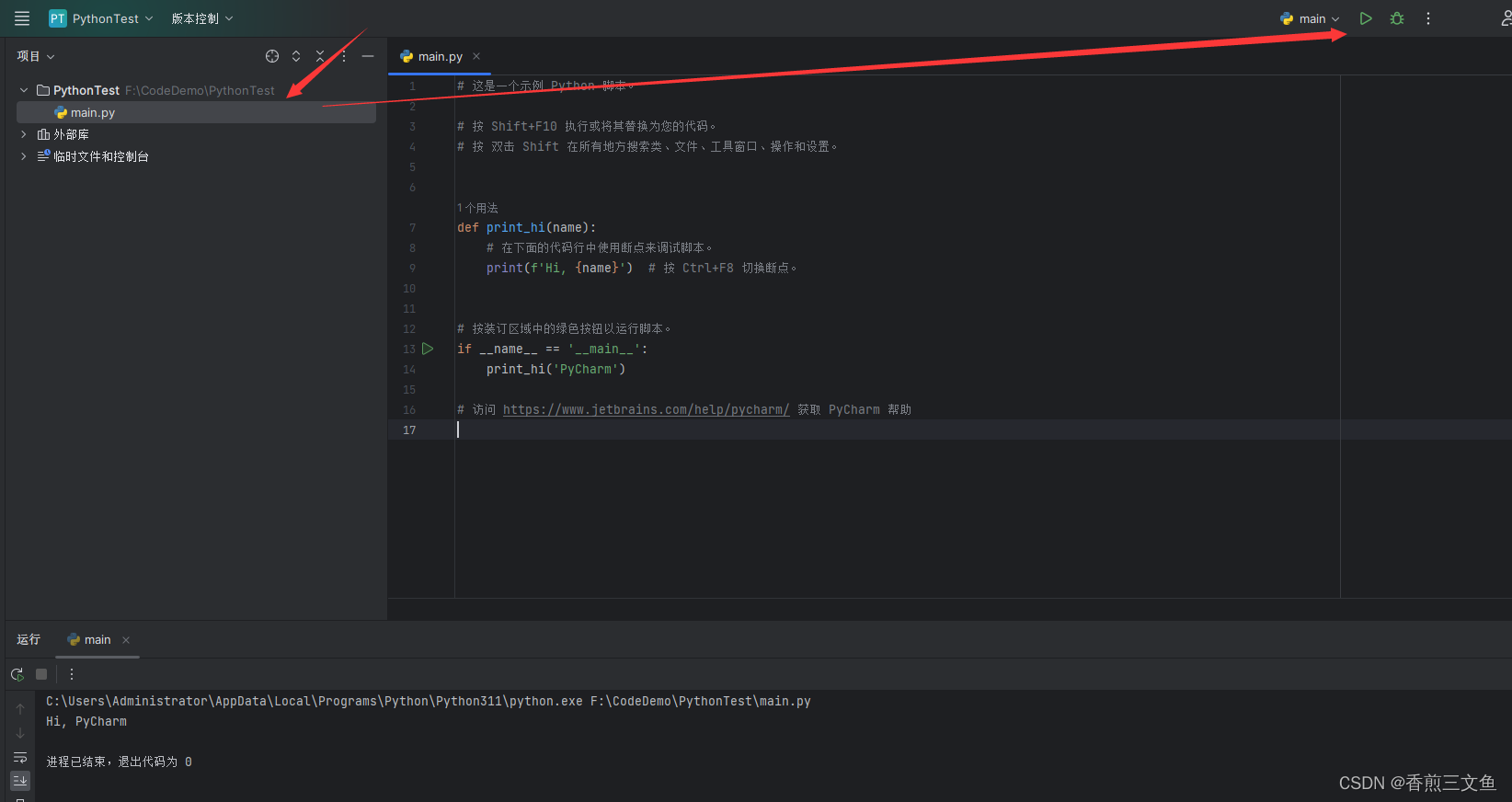
Linux 终端操作命令
内部命令用法
A-
alias
================
NAME
alias - Define or display aliases.
SYNOPSIS
alias [-p] [name[=value] ... ]
DESCRIPTION
Define or display aliases.
Without arguments, `alias' prints the list of aliases in the reusable
form `alias NAME=VALUE' on standard output.
Otherwise, an alias is defined for each NAME whose VALUE is given.
A trailing space in VALUE causes the next word to be checked for
alias substitution when the alias is expanded.
Options:
-p print all defined aliases in a reusable format
Exit Status:
alias returns true unless a NAME is supplied for which no alias has been
defined.
--------------------------------------------------------------------------------
B-
bg
================
NAME
bg - Move jobs to the background.
SYNOPSIS
bg [job_spec ...]
DESCRIPTION
Move jobs to the background.
Place the jobs identified by each JOB_SPEC in the background, as if they
had been started with `&'. If JOB_SPEC is not present, the shell's notion
of the current job is used.
Exit Status:
Returns success unless job control is not enabled or an error occurs.
--------------------------------------------------------------------------------
bind
================
NAME
bind - Set Readline key bindings and variables.
SYNOPSIS
bind [-lpsvPSVX] [-m keymap] [-f filename] [-q name] [-u name] [-r keyseq] [-x keyseq:shell-command] [keyseq:readline-function or readline-command]
DESCRIPTION
Set Readline key bindings and variables.
Bind a key sequence to a Readline function or a macro, or set a
Readline variable. The non-option argument syntax is equivalent to
that found in ~/.inputrc, but must be passed as a single argument:
e.g., bind '"\C-x\C-r": re-read-init-file'.
Options:
-m keymap Use KEYMAP as the keymap for the duration of this
command. Acceptable keymap names are emacs,
emacs-standard, emacs-meta, emacs-ctlx, vi, vi-move,
vi-command, and vi-insert.
-l List names of functions.
-P List function names and bindings.
-p List functions and bindings in a form that can be
reused as input.
-S List key sequences that invoke macros and their values
-s List key sequences that invoke macros and their values
in a form that can be reused as input.
-V List variable names and values
-v List variable names and values in a form that can
be reused as input.
-q function-name Query about which keys invoke the named function.
-u function-name Unbind all keys which are bound to the named function.
-r keyseq Remove the binding for KEYSEQ.
-f filename Read key bindings from FILENAME.
-x keyseq:shell-command Cause SHELL-COMMAND to be executed when
KEYSEQ is entered.
-X List key sequences bound with -x and associated commands
in a form that can be reused as input.
Exit Status:
bind returns 0 unless an unrecognized option is given or an error occurs.
--------------------------------------------------------------------------------
break
================
NAME
break - Exit for, while, or until loops.
SYNOPSIS
break [n]
DESCRIPTION
Exit for, while, or until loops.
Exit a FOR, WHILE or UNTIL loop. If N is specified, break N enclosing
loops.
Exit Status:
The exit status is 0 unless N is not greater than or equal to 1.
--------------------------------------------------------------------------------
builtin
================
NAME
builtin - Execute shell builtins.
SYNOPSIS
builtin [shell-builtin [arg ...]]
DESCRIPTION
Execute shell builtins.
Execute SHELL-BUILTIN with arguments ARGs without performing command
lookup. This is useful when you wish to reimplement a shell builtin
as a shell function, but need to execute the builtin within the function.
Exit Status:
Returns the exit status of SHELL-BUILTIN, or false if SHELL-BUILTIN is
not a shell builtin.
--------------------------------------------------------------------------------
C-
caller
================
NAME
caller - Return the context of the current subroutine call.
SYNOPSIS
caller [expr]
DESCRIPTION
Return the context of the current subroutine call.
Without EXPR, returns "$line $filename". With EXPR, returns
"$line $subroutine $filename"; this extra information can be used to
provide a stack trace.
The value of EXPR indicates how many call frames to go back before the
current one; the top frame is frame 0.
Exit Status:
Returns 0 unless the shell is not executing a shell function or EXPR
is invalid.
--------------------------------------------------------------------------------
case
================
NAME
case - Execute commands based on pattern matching.
SYNOPSIS
case WORD in [PATTERN [| PATTERN]...) COMMANDS ;;]... esac
DESCRIPTION
Execute commands based on pattern matching.
Selectively execute COMMANDS based upon WORD matching PATTERN. The
`|' is used to separate multiple patterns.
Exit Status:
Returns the status of the last command executed.
--------------------------------------------------------------------------------
cd
================
NAME
cd - Change the shell working directory.
SYNOPSIS
cd [-L|[-P [-e]] [-@]] [dir]
DESCRIPTION
Change the shell working directory.
Change the current directory to DIR. The default DIR is the value of the
HOME shell variable.
The variable CDPATH defines the search path for the directory containing
DIR. Alternative directory names in CDPATH are separated by a colon (:).
A null directory name is the same as the current directory. If DIR begins
with a slash (/), then CDPATH is not used.
If the directory is not found, and the shell option `cdable_vars' is set,
the word is assumed to be a variable name. If that variable has a value,
its value is used for DIR.
Options:
-L force symbolic links to be followed: resolve symbolic
links in DIR after processing instances of `..'
-P use the physical directory structure without following
symbolic links: resolve symbolic links in DIR before
processing instances of `..'
-e if the -P option is supplied, and the current working
directory cannot be determined successfully, exit with
a non-zero status
-@ on systems that support it, present a file with extended
attributes as a directory containing the file attributes
The default is to follow symbolic links, as if `-L' were specified.
`..' is processed by removing the immediately previous pathname component
back to a slash or the beginning of DIR.
Exit Status:
Returns 0 if the directory is changed, and if $PWD is set successfully when
-P is used; non-zero otherwise.
--------------------------------------------------------------------------------
command
================
NAME
command - Execute a simple command or display information about commands.
SYNOPSIS
command [-pVv] command [arg ...]
DESCRIPTION
Execute a simple command or display information about commands.
Runs COMMAND with ARGS suppressing shell function lookup, or display
information about the specified COMMANDs. Can be used to invoke commands
on disk when a function with the same name exists.
Options:
-p use a default value for PATH that is guaranteed to find all of
the standard utilities
-v print a description of COMMAND similar to the `type' builtin
-V print a more verbose description of each COMMAND
Exit Status:
Returns exit status of COMMAND, or failure if COMMAND is not found.
--------------------------------------------------------------------------------
compgen
================
NAME
compgen - Display possible completions depending on the options.
SYNOPSIS
compgen [-abcdefgjksuv] [-o option] [-A action] [-G globpat] [-W wordlist] [-F function] [-C command] [-X filterpat] [-P prefix] [-S suffix] [word]
DESCRIPTION
Display possible completions depending on the options.
Intended to be used from within a shell function generating possible
completions. If the optional WORD argument is supplied, matches against
WORD are generated.
Exit Status:
Returns success unless an invalid option is supplied or an error occurs.
--------------------------------------------------------------------------------
complete
================
NAME
complete - Specify how arguments are to be completed by Readline.
SYNOPSIS
complete [-abcdefgjksuv] [-pr] [-DEI] [-o option] [-A action] [-G globpat] [-W wordlist] [-F function] [-C command] [-X filterpat] [-P prefix] [-S suffix] [name ...]
DESCRIPTION
Specify how arguments are to be completed by Readline.
For each NAME, specify how arguments are to be completed. If no options
are supplied, existing completion specifications are printed in a way that
allows them to be reused as input.
Options:
-p print existing completion specifications in a reusable format
-r remove a completion specification for each NAME, or, if no
NAMEs are supplied, all completion specifications
-D apply the completions and actions as the default for commands
without any specific completion defined
-E apply the completions and actions to "empty" commands --
completion attempted on a blank line
-I apply the completions and actions to the initial (usually the
command) word
When completion is attempted, the actions are applied in the order the
uppercase-letter options are listed above. If multiple options are supplied,
the -D option takes precedence over -E, and both take precedence over -I.
Exit Status:
Returns success unless an invalid option is supplied or an error occurs.
--------------------------------------------------------------------------------
compopt
================
NAME
compopt - Modify or display completion options.
SYNOPSIS
compopt [-o|+o option] [-DEI] [name ...]
DESCRIPTION
Modify or display completion options.
Modify the completion options for each NAME, or, if no NAMEs are supplied,
the completion currently being executed. If no OPTIONs are given, print
the completion options for each NAME or the current completion specification.
Options:
-o option Set completion option OPTION for each NAME
-D Change options for the "default" command completion
-E Change options for the "empty" command completion
-I Change options for completion on the initial word
Using `+o' instead of `-o' turns off the specified option.
Arguments:
Each NAME refers to a command for which a completion specification must
have previously been defined using the `complete' builtin. If no NAMEs
are supplied, compopt must be called by a function currently generating
completions, and the options for that currently-executing completion
generator are modified.
Exit Status:
Returns success unless an invalid option is supplied or NAME does not
have a completion specification defined.
--------------------------------------------------------------------------------
continue
================
NAME
continue - Resume for, while, or until loops.
SYNOPSIS
continue [n]
DESCRIPTION
Resume for, while, or until loops.
Resumes the next iteration of the enclosing FOR, WHILE or UNTIL loop.
If N is specified, resumes the Nth enclosing loop.
Exit Status:
The exit status is 0 unless N is not greater than or equal to 1.
--------------------------------------------------------------------------------
coproc
================
NAME
coproc - Create a coprocess named NAME.
SYNOPSIS
coproc [NAME] command [redirections]
DESCRIPTION
Create a coprocess named NAME.
Execute COMMAND asynchronously, with the standard output and standard
input of the command connected via a pipe to file descriptors assigned
to indices 0 and 1 of an array variable NAME in the executing shell.
The default NAME is "COPROC".
Exit Status:
The coproc command returns an exit status of 0.
--------------------------------------------------------------------------------
D-
declare
================
NAME
declare - Set variable values and attributes.
SYNOPSIS
declare [-aAfFgilnrtux] [-p] [name[=value] ...]
DESCRIPTION
Set variable values and attributes.
Declare variables and give them attributes. If no NAMEs are given,
display the attributes and values of all variables.
Options:
-f restrict action or display to function names and definitions
-F restrict display to function names only (plus line number and
source file when debugging)
-g create global variables when used in a shell function; otherwise
ignored
-p display the attributes and value of each NAME
Options which set attributes:
-a to make NAMEs indexed arrays (if supported)
-A to make NAMEs associative arrays (if supported)
-i to make NAMEs have the `integer' attribute
-l to convert the value of each NAME to lower case on assignment
-n make NAME a reference to the variable named by its value
-r to make NAMEs readonly
-t to make NAMEs have the `trace' attribute
-u to convert the value of each NAME to upper case on assignment
-x to make NAMEs export
Using `+' instead of `-' turns off the given attribute.
Variables with the integer attribute have arithmetic evaluation (see
the `let' command) performed when the variable is assigned a value.
When used in a function, `declare' makes NAMEs local, as with the `local'
command. The `-g' option suppresses this behavior.
Exit Status:
Returns success unless an invalid option is supplied or a variable
assignment error occurs.
--------------------------------------------------------------------------------
dirs
================
NAME
dirs - Display directory stack.
SYNOPSIS
dirs [-clpv] [+N] [-N]
DESCRIPTION
Display directory stack.
Display the list of currently remembered directories. Directories
find their way onto the list with the `pushd' command; you can get
back up through the list with the `popd' command.
Options:
-c clear the directory stack by deleting all of the elements
-l do not print tilde-prefixed versions of directories relative
to your home directory
-p print the directory stack with one entry per line
-v print the directory stack with one entry per line prefixed
with its position in the stack
Arguments:
+N Displays the Nth entry counting from the left of the list
shown by dirs when invoked without options, starting with
zero.
-N Displays the Nth entry counting from the right of the list
shown by dirs when invoked without options, starting with
zero.
Exit Status:
Returns success unless an invalid option is supplied or an error occurs.
--------------------------------------------------------------------------------
disown
================
NAME
disown - Remove jobs from current shell.
SYNOPSIS
disown [-h] [-ar] [jobspec ... | pid ...]
DESCRIPTION
Remove jobs from current shell.
Removes each JOBSPEC argument from the table of active jobs. Without
any JOBSPECs, the shell uses its notion of the current job.
Options:
-a remove all jobs if JOBSPEC is not supplied
-h mark each JOBSPEC so that SIGHUP is not sent to the job if the
shell receives a SIGHUP
-r remove only running jobs
Exit Status:
Returns success unless an invalid option or JOBSPEC is given.
--------------------------------------------------------------------------------
E-
echo
================
NAME
echo - Write arguments to the standard output.
SYNOPSIS
echo [-neE] [arg ...]
DESCRIPTION
Write arguments to the standard output.
Display the ARGs, separated by a single space character and followed by a
newline, on the standard output.
Options:
-n do not append a newline
-e enable interpretation of the following backslash escapes
-E explicitly suppress interpretation of backslash escapes
`echo' interprets the following backslash-escaped characters:
\a alert (bell)
\b backspace
\c suppress further output
\e escape character
\E escape character
\f form feed
\n new line
\r carriage return
\t horizontal tab
\v vertical tab
\\ backslash
\0nnn the character whose ASCII code is NNN (octal). NNN can be
0 to 3 octal digits
\xHH the eight-bit character whose value is HH (hexadecimal). HH
can be one or two hex digits
\uHHHH the Unicode character whose value is the hexadecimal value HHHH.
HHHH can be one to four hex digits.
\UHHHHHHHH the Unicode character whose value is the hexadecimal value
HHHHHHHH. HHHHHHHH can be one to eight hex digits.
Exit Status:
Returns success unless a write error occurs.
--------------------------------------------------------------------------------
enable
================
NAME
enable - Enable and disable shell builtins.
SYNOPSIS
enable [-a] [-dnps] [-f filename] [name ...]
DESCRIPTION
Enable and disable shell builtins.
Enables and disables builtin shell commands. Disabling allows you to
execute a disk command which has the same name as a shell builtin
without using a full pathname.
Options:
-a print a list of builtins showing whether or not each is enabled
-n disable each NAME or display a list of disabled builtins
-p print the list of builtins in a reusable format
-s print only the names of Posix `special' builtins
Options controlling dynamic loading:
-f Load builtin NAME from shared object FILENAME
-d Remove a builtin loaded with -f
Without options, each NAME is enabled.
To use the `test' found in $PATH instead of the shell builtin
version, type `enable -n test'.
Exit Status:
Returns success unless NAME is not a shell builtin or an error occurs.
--------------------------------------------------------------------------------
eval
================
NAME
eval - Execute arguments as a shell command.
SYNOPSIS
eval [arg ...]
DESCRIPTION
Execute arguments as a shell command.
Combine ARGs into a single string, use the result as input to the shell,
and execute the resulting commands.
Exit Status:
Returns exit status of command or success if command is null.
--------------------------------------------------------------------------------
exec
================
NAME
exec - Replace the shell with the given command.
SYNOPSIS
exec [-cl] [-a name] [command [arguments ...]] [redirection ...]
DESCRIPTION
Replace the shell with the given command.
Execute COMMAND, replacing this shell with the specified program.
ARGUMENTS become the arguments to COMMAND. If COMMAND is not specified,
any redirections take effect in the current shell.
Options:
-a name pass NAME as the zeroth argument to COMMAND
-c execute COMMAND with an empty environment
-l place a dash in the zeroth argument to COMMAND
If the command cannot be executed, a non-interactive shell exits, unless
the shell option `execfail' is set.
Exit Status:
Returns success unless COMMAND is not found or a redirection error occurs.
--------------------------------------------------------------------------------
exit
================
NAME
exit - Exit the shell.
SYNOPSIS
exit [n]
DESCRIPTION
Exit the shell.
Exits the shell with a status of N. If N is omitted, the exit status
is that of the last command executed.
--------------------------------------------------------------------------------
export
================
NAME
export - Set export attribute for shell variables.
SYNOPSIS
export [-fn] [name[=value] ...] or export -p
DESCRIPTION
Set export attribute for shell variables.
Marks each NAME for automatic export to the environment of subsequently
executed commands. If VALUE is supplied, assign VALUE before exporting.
Options:
-f refer to shell functions
-n remove the export property from each NAME
-p display a list of all exported variables and functions
An argument of `--' disables further option processing.
Exit Status:
Returns success unless an invalid option is given or NAME is invalid.
--------------------------------------------------------------------------------
F-
false
================
NAME
false - Return an unsuccessful result.
SYNOPSIS
false
DESCRIPTION
Return an unsuccessful result.
Exit Status:
Always fails.
--------------------------------------------------------------------------------
fc
================
NAME
fc - Display or execute commands from the history list.
SYNOPSIS
fc [-e ename] [-lnr] [first] [last] or fc -s [pat=rep] [command]
DESCRIPTION
Display or execute commands from the history list.
fc is used to list or edit and re-execute commands from the history list.
FIRST and LAST can be numbers specifying the range, or FIRST can be a
string, which means the most recent command beginning with that
string.
Options:
-e ENAME select which editor to use. Default is FCEDIT, then EDITOR,
then vi
-l list lines instead of editing
-n omit line numbers when listing
-r reverse the order of the lines (newest listed first)
With the `fc -s [pat=rep ...] [command]' format, COMMAND is
re-executed after the substitution OLD=NEW is performed.
A useful alias to use with this is r='fc -s', so that typing `r cc'
runs the last command beginning with `cc' and typing `r' re-executes
the last command.
Exit Status:
Returns success or status of executed command; non-zero if an error occurs.
--------------------------------------------------------------------------------
fg
================
NAME
fg - Move job to the foreground.
SYNOPSIS
fg [job_spec]
DESCRIPTION
Move job to the foreground.
Place the job identified by JOB_SPEC in the foreground, making it the
current job. If JOB_SPEC is not present, the shell's notion of the
current job is used.
Exit Status:
Status of command placed in foreground, or failure if an error occurs.
--------------------------------------------------------------------------------
for
================
NAME
for - Execute commands for each member in a list.
SYNOPSIS
for NAME [in WORDS ... ] ; do COMMANDS; done
DESCRIPTION
Execute commands for each member in a list.
The `for' loop executes a sequence of commands for each member in a
list of items. If `in WORDS ...;' is not present, then `in "$@"' is
assumed. For each element in WORDS, NAME is set to that element, and
the COMMANDS are executed.
Exit Status:
Returns the status of the last command executed.
--------------------------------------------------------------------------------
function
================
NAME
function - Define shell function.
SYNOPSIS
function name { COMMANDS ; } or name () { COMMANDS ; }
DESCRIPTION
Define shell function.
Create a shell function named NAME. When invoked as a simple command,
NAME runs COMMANDs in the calling shell's context. When NAME is invoked,
the arguments are passed to the function as $1...$n, and the function's
name is in $FUNCNAME.
Exit Status:
Returns success unless NAME is readonly.
--------------------------------------------------------------------------------
G-
getopts
================
NAME
getopts - Parse option arguments.
SYNOPSIS
getopts optstring name [arg]
DESCRIPTION
Parse option arguments.
Getopts is used by shell procedures to parse positional parameters
as options.
OPTSTRING contains the option letters to be recognized; if a letter
is followed by a colon, the option is expected to have an argument,
which should be separated from it by white space.
Each time it is invoked, getopts will place the next option in the
shell variable $name, initializing name if it does not exist, and
the index of the next argument to be processed into the shell
variable OPTIND. OPTIND is initialized to 1 each time the shell or
a shell script is invoked. When an option requires an argument,
getopts places that argument into the shell variable OPTARG.
getopts reports errors in one of two ways. If the first character
of OPTSTRING is a colon, getopts uses silent error reporting. In
this mode, no error messages are printed. If an invalid option is
seen, getopts places the option character found into OPTARG. If a
required argument is not found, getopts places a ':' into NAME and
sets OPTARG to the option character found. If getopts is not in
silent mode, and an invalid option is seen, getopts places '?' into
NAME and unsets OPTARG. If a required argument is not found, a '?'
is placed in NAME, OPTARG is unset, and a diagnostic message is
printed.
If the shell variable OPTERR has the value 0, getopts disables the
printing of error messages, even if the first character of
OPTSTRING is not a colon. OPTERR has the value 1 by default.
Getopts normally parses the positional parameters ($0 - $9), but if
more arguments are given, they are parsed instead.
Exit Status:
Returns success if an option is found; fails if the end of options is
encountered or an error occurs.
--------------------------------------------------------------------------------
H-
hash
================
NAME
hash - Remember or display program locations.
SYNOPSIS
hash [-lr] [-p pathname] [-dt] [name ...]
DESCRIPTION
Remember or display program locations.
Determine and remember the full pathname of each command NAME. If
no arguments are given, information about remembered commands is displayed.
Options:
-d forget the remembered location of each NAME
-l display in a format that may be reused as input
-p pathname use PATHNAME as the full pathname of NAME
-r forget all remembered locations
-t print the remembered location of each NAME, preceding
each location with the corresponding NAME if multiple
NAMEs are given
Arguments:
NAME Each NAME is searched for in $PATH and added to the list
of remembered commands.
Exit Status:
Returns success unless NAME is not found or an invalid option is given.
--------------------------------------------------------------------------------
help
================
NAME
help - Display information about builtin commands.
SYNOPSIS
help [-dms] [pattern ...]
DESCRIPTION
Display information about builtin commands.
Displays brief summaries of builtin commands. If PATTERN is
specified, gives detailed help on all commands matching PATTERN,
otherwise the list of help topics is printed.
Options:
-d output short description for each topic
-m display usage in pseudo-manpage format
-s output only a short usage synopsis for each topic matching
PATTERN
Arguments:
PATTERN Pattern specifying a help topic
Exit Status:
Returns success unless PATTERN is not found or an invalid option is given.
--------------------------------------------------------------------------------
history
================
NAME
history - Display or manipulate the history list.
SYNOPSIS
history [-c] [-d offset] [n] or history -anrw [filename] or history -ps arg [arg...]
DESCRIPTION
Display or manipulate the history list.
Display the history list with line numbers, prefixing each modified
entry with a `*'. An argument of N lists only the last N entries.
Options:
-c clear the history list by deleting all of the entries
-d offset delete the history entry at position OFFSET. Negative
offsets count back from the end of the history list
-a append history lines from this session to the history file
-n read all history lines not already read from the history file
and append them to the history list
-r read the history file and append the contents to the history
list
-w write the current history to the history file
-p perform history expansion on each ARG and display the result
without storing it in the history list
-s append the ARGs to the history list as a single entry
If FILENAME is given, it is used as the history file. Otherwise,
if HISTFILE has a value, that is used, else ~/.bash_history.
If the HISTTIMEFORMAT variable is set and not null, its value is used
as a format string for strftime(3) to print the time stamp associated
with each displayed history entry. No time stamps are printed otherwise.
Exit Status:
Returns success unless an invalid option is given or an error occurs.
--------------------------------------------------------------------------------
I-
if
================
NAME
if - Execute commands based on conditional.
SYNOPSIS
if COMMANDS; then COMMANDS; [ elif COMMANDS; then COMMANDS; ]... [ else COMMANDS; ] fi
DESCRIPTION
Execute commands based on conditional.
The `if COMMANDS' list is executed. If its exit status is zero, then the
`then COMMANDS' list is executed. Otherwise, each `elif COMMANDS' list is
executed in turn, and if its exit status is zero, the corresponding
`then COMMANDS' list is executed and the if command completes. Otherwise,
the `else COMMANDS' list is executed, if present. The exit status of the
entire construct is the exit status of the last command executed, or zero
if no condition tested true.
Exit Status:
Returns the status of the last command executed.
--------------------------------------------------------------------------------
J-
jobs
================
NAME
jobs - Display status of jobs.
SYNOPSIS
jobs [-lnprs] [jobspec ...] or jobs -x command [args]
DESCRIPTION
Display status of jobs.
Lists the active jobs. JOBSPEC restricts output to that job.
Without options, the status of all active jobs is displayed.
Options:
-l lists process IDs in addition to the normal information
-n lists only processes that have changed status since the last
notification
-p lists process IDs only
-r restrict output to running jobs
-s restrict output to stopped jobs
If -x is supplied, COMMAND is run after all job specifications that
appear in ARGS have been replaced with the process ID of that job's
process group leader.
Exit Status:
Returns success unless an invalid option is given or an error occurs.
If -x is used, returns the exit status of COMMAND.
--------------------------------------------------------------------------------
K-
kill
================
NAME
kill - Send a signal to a job.
SYNOPSIS
kill [-s sigspec | -n signum | -sigspec] pid | jobspec ... or kill -l [sigspec]
DESCRIPTION
Send a signal to a job.
Send the processes identified by PID or JOBSPEC the signal named by
SIGSPEC or SIGNUM. If neither SIGSPEC nor SIGNUM is present, then
SIGTERM is assumed.
Options:
-s sig SIG is a signal name
-n sig SIG is a signal number
-l list the signal names; if arguments follow `-l' they are
assumed to be signal numbers for which names should be listed
-L synonym for -l
Kill is a shell builtin for two reasons: it allows job IDs to be used
instead of process IDs, and allows processes to be killed if the limit
on processes that you can create is reached.
Exit Status:
Returns success unless an invalid option is given or an error occurs.
--------------------------------------------------------------------------------
L-
let
================
NAME
let - Evaluate arithmetic expressions.
SYNOPSIS
let arg [arg ...]
DESCRIPTION
Evaluate arithmetic expressions.
Evaluate each ARG as an arithmetic expression. Evaluation is done in
fixed-width integers with no check for overflow, though division by 0
is trapped and flagged as an error. The following list of operators is
grouped into levels of equal-precedence operators. The levels are listed
in order of decreasing precedence.
id++, id-- variable post-increment, post-decrement
++id, --id variable pre-increment, pre-decrement
-, + unary minus, plus
!, ~ logical and bitwise negation
** exponentiation
*, /, % multiplication, division, remainder
+, - addition, subtraction
<<, >> left and right bitwise shifts
<=, >=, <, > comparison
==, != equality, inequality
& bitwise AND
^ bitwise XOR
| bitwise OR
&& logical AND
|| logical OR
expr ? expr : expr
conditional operator
=, *=, /=, %=,
+=, -=, <<=, >>=,
&=, ^=, |= assignment
Shell variables are allowed as operands. The name of the variable
is replaced by its value (coerced to a fixed-width integer) within
an expression. The variable need not have its integer attribute
turned on to be used in an expression.
Operators are evaluated in order of precedence. Sub-expressions in
parentheses are evaluated first and may override the precedence
rules above.
Exit Status:
If the last ARG evaluates to 0, let returns 1; let returns 0 otherwise.
--------------------------------------------------------------------------------
local
================
NAME
local - Define local variables.
SYNOPSIS
local [option] name[=value] ...
DESCRIPTION
Define local variables.
Create a local variable called NAME, and give it VALUE. OPTION can
be any option accepted by `declare'.
Local variables can only be used within a function; they are visible
only to the function where they are defined and its children.
Exit Status:
Returns success unless an invalid option is supplied, a variable
assignment error occurs, or the shell is not executing a function.
--------------------------------------------------------------------------------
logout
================
NAME
logout - Exit a login shell.
SYNOPSIS
logout [n]
DESCRIPTION
Exit a login shell.
Exits a login shell with exit status N. Returns an error if not executed
in a login shell.
--------------------------------------------------------------------------------
M-
mapfile
================
NAME
mapfile - Read lines from the standard input into an indexed array variable.
SYNOPSIS
mapfile [-d delim] [-n count] [-O origin] [-s count] [-t] [-u fd] [-C callback] [-c quantum] [array]
DESCRIPTION
Read lines from the standard input into an indexed array variable.
Read lines from the standard input into the indexed array variable ARRAY, or
from file descriptor FD if the -u option is supplied. The variable MAPFILE
is the default ARRAY.
Options:
-d delim Use DELIM to terminate lines, instead of newline
-n count Copy at most COUNT lines. If COUNT is 0, all lines are copied
-O origin Begin assigning to ARRAY at index ORIGIN. The default index is 0
-s count Discard the first COUNT lines read
-t Remove a trailing DELIM from each line read (default newline)
-u fd Read lines from file descriptor FD instead of the standard input
-C callback Evaluate CALLBACK each time QUANTUM lines are read
-c quantum Specify the number of lines read between each call to
CALLBACK
Arguments:
ARRAY Array variable name to use for file data
If -C is supplied without -c, the default quantum is 5000. When
CALLBACK is evaluated, it is supplied the index of the next array
element to be assigned and the line to be assigned to that element
as additional arguments.
If not supplied with an explicit origin, mapfile will clear ARRAY before
assigning to it.
Exit Status:
Returns success unless an invalid option is given or ARRAY is readonly or
not an indexed array.
--------------------------------------------------------------------------------
P-
popd
================
NAME
popd - Remove directories from stack.
SYNOPSIS
popd [-n] [+N | -N]
DESCRIPTION
Remove directories from stack.
Removes entries from the directory stack. With no arguments, removes
the top directory from the stack, and changes to the new top directory.
Options:
-n Suppresses the normal change of directory when removing
directories from the stack, so only the stack is manipulated.
Arguments:
+N Removes the Nth entry counting from the left of the list
shown by `dirs', starting with zero. For example: `popd +0'
removes the first directory, `popd +1' the second.
-N Removes the Nth entry counting from the right of the list
shown by `dirs', starting with zero. For example: `popd -0'
removes the last directory, `popd -1' the next to last.
The `dirs' builtin displays the directory stack.
Exit Status:
Returns success unless an invalid argument is supplied or the directory
change fails.
--------------------------------------------------------------------------------
printf
================
NAME
printf - Formats and prints ARGUMENTS under control of the FORMAT.
SYNOPSIS
printf [-v var] format [arguments]
DESCRIPTION
Formats and prints ARGUMENTS under control of the FORMAT.
Options:
-v var assign the output to shell variable VAR rather than
display it on the standard output
FORMAT is a character string which contains three types of objects: plain
characters, which are simply copied to standard output; character escape
sequences, which are converted and copied to the standard output; and
format specifications, each of which causes printing of the next successive
argument.
In addition to the standard format specifications described in printf(1),
printf interprets:
%b expand backslash escape sequences in the corresponding argument
%q quote the argument in a way that can be reused as shell input
%(fmt)T output the date-time string resulting from using FMT as a format
string for strftime(3)
The format is re-used as necessary to consume all of the arguments. If
there are fewer arguments than the format requires, extra format
specifications behave as if a zero value or null string, as appropriate,
had been supplied.
Exit Status:
Returns success unless an invalid option is given or a write or assignment
error occurs.
--------------------------------------------------------------------------------
pushd
================
NAME
pushd - Add directories to stack.
SYNOPSIS
pushd [-n] [+N | -N | dir]
DESCRIPTION
Add directories to stack.
Adds a directory to the top of the directory stack, or rotates
the stack, making the new top of the stack the current working
directory. With no arguments, exchanges the top two directories.
Options:
-n Suppresses the normal change of directory when adding
directories to the stack, so only the stack is manipulated.
Arguments:
+N Rotates the stack so that the Nth directory (counting
from the left of the list shown by `dirs', starting with
zero) is at the top.
-N Rotates the stack so that the Nth directory (counting
from the right of the list shown by `dirs', starting with
zero) is at the top.
dir Adds DIR to the directory stack at the top, making it the
new current working directory.
The `dirs' builtin displays the directory stack.
Exit Status:
Returns success unless an invalid argument is supplied or the directory
change fails.
--------------------------------------------------------------------------------
pwd
================
NAME
pwd - Print the name of the current working directory.
SYNOPSIS
pwd [-LP]
DESCRIPTION
Print the name of the current working directory.
Options:
-L print the value of $PWD if it names the current working
directory
-P print the physical directory, without any symbolic links
By default, `pwd' behaves as if `-L' were specified.
Exit Status:
Returns 0 unless an invalid option is given or the current directory
cannot be read.
--------------------------------------------------------------------------------
R-
read
================
NAME
read - Read a line from the standard input and split it into fields.
SYNOPSIS
read [-ers] [-a array] [-d delim] [-i text] [-n nchars] [-N nchars] [-p prompt] [-t timeout] [-u fd] [name ...]
DESCRIPTION
Read a line from the standard input and split it into fields.
Reads a single line from the standard input, or from file descriptor FD
if the -u option is supplied. The line is split into fields as with word
splitting, and the first word is assigned to the first NAME, the second
word to the second NAME, and so on, with any leftover words assigned to
the last NAME. Only the characters found in $IFS are recognized as word
delimiters.
If no NAMEs are supplied, the line read is stored in the REPLY variable.
Options:
-a array assign the words read to sequential indices of the array
variable ARRAY, starting at zero
-d delim continue until the first character of DELIM is read, rather
than newline
-e use Readline to obtain the line
-i text use TEXT as the initial text for Readline
-n nchars return after reading NCHARS characters rather than waiting
for a newline, but honor a delimiter if fewer than
NCHARS characters are read before the delimiter
-N nchars return only after reading exactly NCHARS characters, unless
EOF is encountered or read times out, ignoring any
delimiter
-p prompt output the string PROMPT without a trailing newline before
attempting to read
-r do not allow backslashes to escape any characters
-s do not echo input coming from a terminal
-t timeout time out and return failure if a complete line of
input is not read within TIMEOUT seconds. The value of the
TMOUT variable is the default timeout. TIMEOUT may be a
fractional number. If TIMEOUT is 0, read returns
immediately, without trying to read any data, returning
success only if input is available on the specified
file descriptor. The exit status is greater than 128
if the timeout is exceeded
-u fd read from file descriptor FD instead of the standard input
Exit Status:
The return code is zero, unless end-of-file is encountered, read times out
(in which case it's greater than 128), a variable assignment error occurs,
or an invalid file descriptor is supplied as the argument to -u.
--------------------------------------------------------------------------------
readarray
================
NAME
readarray - Read lines from a file into an array variable.
SYNOPSIS
readarray [-d delim] [-n count] [-O origin] [-s count] [-t] [-u fd] [-C callback] [-c quantum] [array]
DESCRIPTION
Read lines from a file into an array variable.
A synonym for `mapfile'.
--------------------------------------------------------------------------------
readonly
================
NAME
readonly - Mark shell variables as unchangeable.
SYNOPSIS
readonly [-aAf] [name[=value] ...] or readonly -p
DESCRIPTION
Mark shell variables as unchangeable.
Mark each NAME as read-only; the values of these NAMEs may not be
changed by subsequent assignment. If VALUE is supplied, assign VALUE
before marking as read-only.
Options:
-a refer to indexed array variables
-A refer to associative array variables
-f refer to shell functions
-p display a list of all readonly variables or functions,
depending on whether or not the -f option is given
An argument of `--' disables further option processing.
Exit Status:
Returns success unless an invalid option is given or NAME is invalid.
--------------------------------------------------------------------------------
return
================
NAME
return - Return from a shell function.
SYNOPSIS
return [n]
DESCRIPTION
Return from a shell function.
Causes a function or sourced script to exit with the return value
specified by N. If N is omitted, the return status is that of the
last command executed within the function or script.
Exit Status:
Returns N, or failure if the shell is not executing a function or script.
--------------------------------------------------------------------------------
S-
select
================
NAME
select - Select words from a list and execute commands.
SYNOPSIS
select NAME [in WORDS ... ;] do COMMANDS; done
DESCRIPTION
Select words from a list and execute commands.
The WORDS are expanded, generating a list of words. The
set of expanded words is printed on the standard error, each
preceded by a number. If `in WORDS' is not present, `in "$@"'
is assumed. The PS3 prompt is then displayed and a line read
from the standard input. If the line consists of the number
corresponding to one of the displayed words, then NAME is set
to that word. If the line is empty, WORDS and the prompt are
redisplayed. If EOF is read, the command completes. Any other
value read causes NAME to be set to null. The line read is saved
in the variable REPLY. COMMANDS are executed after each selection
until a break command is executed.
Exit Status:
Returns the status of the last command executed.
--------------------------------------------------------------------------------
set
================
NAME
set - Set or unset values of shell options and positional parameters.
SYNOPSIS
set [-abefhkmnptuvxBCHP] [-o option-name] [--] [arg ...]
DESCRIPTION
Set or unset values of shell options and positional parameters.
Change the value of shell attributes and positional parameters, or
display the names and values of shell variables.
Options:
-a Mark variables which are modified or created for export.
-b Notify of job termination immediately.
-e Exit immediately if a command exits with a non-zero status.
-f Disable file name generation (globbing).
-h Remember the location of commands as they are looked up.
-k All assignment arguments are placed in the environment for a
command, not just those that precede the command name.
-m Job control is enabled.
-n Read commands but do not execute them.
-o option-name
Set the variable corresponding to option-name:
allexport same as -a
braceexpand same as -B
emacs use an emacs-style line editing interface
errexit same as -e
errtrace same as -E
functrace same as -T
hashall same as -h
histexpand same as -H
history enable command history
ignoreeof the shell will not exit upon reading EOF
interactive-comments
allow comments to appear in interactive commands
keyword same as -k
monitor same as -m
noclobber same as -C
noexec same as -n
noglob same as -f
nolog currently accepted but ignored
notify same as -b
nounset same as -u
onecmd same as -t
physical same as -P
pipefail the return value of a pipeline is the status of
the last command to exit with a non-zero status,
or zero if no command exited with a non-zero status
posix change the behavior of bash where the default
operation differs from the Posix standard to
match the standard
privileged same as -p
verbose same as -v
vi use a vi-style line editing interface
xtrace same as -x
-p Turned on whenever the real and effective user ids do not match.
Disables processing of the $ENV file and importing of shell
functions. Turning this option off causes the effective uid and
gid to be set to the real uid and gid.
-t Exit after reading and executing one command.
-u Treat unset variables as an error when substituting.
-v Print shell input lines as they are read.
-x Print commands and their arguments as they are executed.
-B the shell will perform brace expansion
-C If set, disallow existing regular files to be overwritten
by redirection of output.
-E If set, the ERR trap is inherited by shell functions.
-H Enable ! style history substitution. This flag is on
by default when the shell is interactive.
-P If set, do not resolve symbolic links when executing commands
such as cd which change the current directory.
-T If set, the DEBUG and RETURN traps are inherited by shell functions.
-- Assign any remaining arguments to the positional parameters.
If there are no remaining arguments, the positional parameters
are unset.
- Assign any remaining arguments to the positional parameters.
The -x and -v options are turned off.
Using + rather than - causes these flags to be turned off. The
flags can also be used upon invocation of the shell. The current
set of flags may be found in $-. The remaining n ARGs are positional
parameters and are assigned, in order, to $1, $2, .. $n. If no
ARGs are given, all shell variables are printed.
Exit Status:
Returns success unless an invalid option is given.
--------------------------------------------------------------------------------
shift
================
NAME
shift - Shift positional parameters.
SYNOPSIS
shift [n]
DESCRIPTION
Shift positional parameters.
Rename the positional parameters $N+1,$N+2 ... to $1,$2 ... If N is
not given, it is assumed to be 1.
Exit Status:
Returns success unless N is negative or greater than $#.
--------------------------------------------------------------------------------
shopt
================
NAME
shopt - Set and unset shell options.
SYNOPSIS
shopt [-pqsu] [-o] [optname ...]
DESCRIPTION
Set and unset shell options.
Change the setting of each shell option OPTNAME. Without any option
arguments, list each supplied OPTNAME, or all shell options if no
OPTNAMEs are given, with an indication of whether or not each is set.
Options:
-o restrict OPTNAMEs to those defined for use with `set -o'
-p print each shell option with an indication of its status
-q suppress output
-s enable (set) each OPTNAME
-u disable (unset) each OPTNAME
Exit Status:
Returns success if OPTNAME is enabled; fails if an invalid option is
given or OPTNAME is disabled.
--------------------------------------------------------------------------------
source
================
NAME
source - Execute commands from a file in the current shell.
SYNOPSIS
source filename [arguments]
DESCRIPTION
Execute commands from a file in the current shell.
Read and execute commands from FILENAME in the current shell. The
entries in $PATH are used to find the directory containing FILENAME.
If any ARGUMENTS are supplied, they become the positional parameters
when FILENAME is executed.
Exit Status:
Returns the status of the last command executed in FILENAME; fails if
FILENAME cannot be read.
--------------------------------------------------------------------------------
suspend
================
NAME
suspend - Suspend shell execution.
SYNOPSIS
suspend [-f]
DESCRIPTION
Suspend shell execution.
Suspend the execution of this shell until it receives a SIGCONT signal.
Unless forced, login shells cannot be suspended.
Options:
-f force the suspend, even if the shell is a login shell
Exit Status:
Returns success unless job control is not enabled or an error occurs.
--------------------------------------------------------------------------------
T-
test
================
NAME
test - Evaluate conditional expression.
SYNOPSIS
test [expr]
DESCRIPTION
Evaluate conditional expression.
Exits with a status of 0 (true) or 1 (false) depending on
the evaluation of EXPR. Expressions may be unary or binary. Unary
expressions are often used to examine the status of a file. There
are string operators and numeric comparison operators as well.
The behavior of test depends on the number of arguments. Read the
bash manual page for the complete specification.
File operators:
-a FILE True if file exists.
-b FILE True if file is block special.
-c FILE True if file is character special.
-d FILE True if file is a directory.
-e FILE True if file exists.
-f FILE True if file exists and is a regular file.
-g FILE True if file is set-group-id.
-h FILE True if file is a symbolic link.
-L FILE True if file is a symbolic link.
-k FILE True if file has its `sticky' bit set.
-p FILE True if file is a named pipe.
-r FILE True if file is readable by you.
-s FILE True if file exists and is not empty.
-S FILE True if file is a socket.
-t FD True if FD is opened on a terminal.
-u FILE True if the file is set-user-id.
-w FILE True if the file is writable by you.
-x FILE True if the file is executable by you.
-O FILE True if the file is effectively owned by you.
-G FILE True if the file is effectively owned by your group.
-N FILE True if the file has been modified since it was last read.
FILE1 -nt FILE2 True if file1 is newer than file2 (according to
modification date).
FILE1 -ot FILE2 True if file1 is older than file2.
FILE1 -ef FILE2 True if file1 is a hard link to file2.
All file operators except -h and -L are acting on the target of a symbolic
link, not on the symlink itself, if FILE is a symbolic link.
String operators:
-z STRING True if string is empty.
-n STRING
STRING True if string is not empty.
STRING1 = STRING2
True if the strings are equal.
STRING1 != STRING2
True if the strings are not equal.
STRING1 < STRING2
True if STRING1 sorts before STRING2 lexicographically.
STRING1 > STRING2
True if STRING1 sorts after STRING2 lexicographically.
Other operators:
-o OPTION True if the shell option OPTION is enabled.
-v VAR True if the shell variable VAR is set.
-R VAR True if the shell variable VAR is set and is a name
reference.
! EXPR True if expr is false.
EXPR1 -a EXPR2 True if both expr1 AND expr2 are true.
EXPR1 -o EXPR2 True if either expr1 OR expr2 is true.
arg1 OP arg2 Arithmetic tests. OP is one of -eq, -ne,
-lt, -le, -gt, or -ge.
Arithmetic binary operators return true if ARG1 is equal, not-equal,
less-than, less-than-or-equal, greater-than, or greater-than-or-equal
than ARG2.
See the bash manual page bash(1) for the handling of parameters (i.e.
missing parameters).
Exit Status:
Returns success if EXPR evaluates to true; fails if EXPR evaluates to
false or an invalid argument is given.
--------------------------------------------------------------------------------
time
================
NAME
time - Report time consumed by pipeline's execution.
SYNOPSIS
time [-p] pipeline
DESCRIPTION
Report time consumed by pipeline's execution.
Execute PIPELINE and print a summary of the real time, user CPU time,
and system CPU time spent executing PIPELINE when it terminates.
Options:
-p print the timing summary in the portable Posix format
The value of the TIMEFORMAT variable is used as the output format.
Exit Status:
The return status is the return status of PIPELINE.
--------------------------------------------------------------------------------
times
================
NAME
times - Display process times.
SYNOPSIS
times
DESCRIPTION
Display process times.
Prints the accumulated user and system times for the shell and all of its
child processes.
Exit Status:
Always succeeds.
--------------------------------------------------------------------------------
trap
================
NAME
trap - Trap signals and other events.
SYNOPSIS
trap [-lp] [[arg] signal_spec ...]
DESCRIPTION
Trap signals and other events.
Defines and activates handlers to be run when the shell receives signals
or other conditions.
ARG is a command to be read and executed when the shell receives the
signal(s) SIGNAL_SPEC. If ARG is absent (and a single SIGNAL_SPEC
is supplied) or `-', each specified signal is reset to its original
value. If ARG is the null string each SIGNAL_SPEC is ignored by the
shell and by the commands it invokes.
If a SIGNAL_SPEC is EXIT (0) ARG is executed on exit from the shell. If
a SIGNAL_SPEC is DEBUG, ARG is executed before every simple command. If
a SIGNAL_SPEC is RETURN, ARG is executed each time a shell function or a
script run by the . or source builtins finishes executing. A SIGNAL_SPEC
of ERR means to execute ARG each time a command's failure would cause the
shell to exit when the -e option is enabled.
If no arguments are supplied, trap prints the list of commands associated
with each signal.
Options:
-l print a list of signal names and their corresponding numbers
-p display the trap commands associated with each SIGNAL_SPEC
Each SIGNAL_SPEC is either a signal name in <signal.h> or a signal number.
Signal names are case insensitive and the SIG prefix is optional. A
signal may be sent to the shell with "kill -signal $$".
Exit Status:
Returns success unless a SIGSPEC is invalid or an invalid option is given.
--------------------------------------------------------------------------------
true
================
NAME
true - Return a successful result.
SYNOPSIS
true
DESCRIPTION
Return a successful result.
Exit Status:
Always succeeds.
--------------------------------------------------------------------------------
type
================
NAME
type - Display information about command type.
SYNOPSIS
type [-afptP] name [name ...]
DESCRIPTION
Display information about command type.
For each NAME, indicate how it would be interpreted if used as a
command name.
Options:
-a display all locations containing an executable named NAME;
includes aliases, builtins, and functions, if and only if
the `-p' option is not also used
-f suppress shell function lookup
-P force a PATH search for each NAME, even if it is an alias,
builtin, or function, and returns the name of the disk file
that would be executed
-p returns either the name of the disk file that would be executed,
or nothing if `type -t NAME' would not return `file'
-t output a single word which is one of `alias', `keyword',
`function', `builtin', `file' or `', if NAME is an alias,
shell reserved word, shell function, shell builtin, disk file,
or not found, respectively
Arguments:
NAME Command name to be interpreted.
Exit Status:
Returns success if all of the NAMEs are found; fails if any are not found.
--------------------------------------------------------------------------------
typeset
================
NAME
typeset - Set variable values and attributes.
SYNOPSIS
typeset [-aAfFgilnrtux] [-p] name[=value] ...
DESCRIPTION
Set variable values and attributes.
A synonym for `declare'. See `help declare'.
--------------------------------------------------------------------------------
U-
ulimit
================
NAME
ulimit - Modify shell resource limits.
SYNOPSIS
ulimit [-SHabcdefiklmnpqrstuvxPT] [limit]
DESCRIPTION
Modify shell resource limits.
Provides control over the resources available to the shell and processes
it creates, on systems that allow such control.
Options:
-S use the `soft' resource limit
-H use the `hard' resource limit
-a all current limits are reported
-b the socket buffer size
-c the maximum size of core files created
-d the maximum size of a process's data segment
-e the maximum scheduling priority (`nice')
-f the maximum size of files written by the shell and its children
-i the maximum number of pending signals
-k the maximum number of kqueues allocated for this process
-l the maximum size a process may lock into memory
-m the maximum resident set size
-n the maximum number of open file descriptors
-p the pipe buffer size
-q the maximum number of bytes in POSIX message queues
-r the maximum real-time scheduling priority
-s the maximum stack size
-t the maximum amount of cpu time in seconds
-u the maximum number of user processes
-v the size of virtual memory
-x the maximum number of file locks
-P the maximum number of pseudoterminals
-T the maximum number of threads
Not all options are available on all platforms.
If LIMIT is given, it is the new value of the specified resource; the
special LIMIT values `soft', `hard', and `unlimited' stand for the
current soft limit, the current hard limit, and no limit, respectively.
Otherwise, the current value of the specified resource is printed. If
no option is given, then -f is assumed.
Values are in 1024-byte increments, except for -t, which is in seconds,
-p, which is in increments of 512 bytes, and -u, which is an unscaled
number of processes.
Exit Status:
Returns success unless an invalid option is supplied or an error occurs.
--------------------------------------------------------------------------------
umask
================
NAME
umask - Display or set file mode mask.
SYNOPSIS
umask [-p] [-S] [mode]
DESCRIPTION
Display or set file mode mask.
Sets the user file-creation mask to MODE. If MODE is omitted, prints
the current value of the mask.
If MODE begins with a digit, it is interpreted as an octal number;
otherwise it is a symbolic mode string like that accepted by chmod(1).
Options:
-p if MODE is omitted, output in a form that may be reused as input
-S makes the output symbolic; otherwise an octal number is output
Exit Status:
Returns success unless MODE is invalid or an invalid option is given.
--------------------------------------------------------------------------------
unalias
================
NAME
unalias - Remove each NAME from the list of defined aliases.
SYNOPSIS
unalias [-a] name [name ...]
DESCRIPTION
Remove each NAME from the list of defined aliases.
Options:
-a remove all alias definitions
Return success unless a NAME is not an existing alias.
--------------------------------------------------------------------------------
unset
================
NAME
unset - Unset values and attributes of shell variables and functions.
SYNOPSIS
unset [-f] [-v] [-n] [name ...]
DESCRIPTION
Unset values and attributes of shell variables and functions.
For each NAME, remove the corresponding variable or function.
Options:
-f treat each NAME as a shell function
-v treat each NAME as a shell variable
-n treat each NAME as a name reference and unset the variable itself
rather than the variable it references
Without options, unset first tries to unset a variable, and if that fails,
tries to unset a function.
Some variables cannot be unset; also see `readonly'.
Exit Status:
Returns success unless an invalid option is given or a NAME is read-only.
--------------------------------------------------------------------------------
until
================
NAME
until - Execute commands as long as a test does not succeed.
SYNOPSIS
until COMMANDS; do COMMANDS; done
DESCRIPTION
Execute commands as long as a test does not succeed.
Expand and execute COMMANDS as long as the final command in the
`until' COMMANDS has an exit status which is not zero.
Exit Status:
Returns the status of the last command executed.
--------------------------------------------------------------------------------
V-
variables
================
NAME
variables - Common shell variable names and usage.
SYNOPSIS
variables - Names and meanings of some shell variables
DESCRIPTION
Common shell variable names and usage.
BASH_VERSION Version information for this Bash.
CDPATH A colon-separated list of directories to search
for directories given as arguments to `cd'.
GLOBIGNORE A colon-separated list of patterns describing filenames to
be ignored by pathname expansion.
HISTFILE The name of the file where your command history is stored.
HISTFILESIZE The maximum number of lines this file can contain.
HISTSIZE The maximum number of history lines that a running
shell can access.
HOME The complete pathname to your login directory.
HOSTNAME The name of the current host.
HOSTTYPE The type of CPU this version of Bash is running under.
IGNOREEOF Controls the action of the shell on receipt of an EOF
character as the sole input. If set, then the value
of it is the number of EOF characters that can be seen
in a row on an empty line before the shell will exit
(default 10). When unset, EOF signifies the end of input.
MACHTYPE A string describing the current system Bash is running on.
MAILCHECK How often, in seconds, Bash checks for new mail.
MAILPATH A colon-separated list of filenames which Bash checks
for new mail.
OSTYPE The version of Unix this version of Bash is running on.
PATH A colon-separated list of directories to search when
looking for commands.
PROMPT_COMMAND A command to be executed before the printing of each
primary prompt.
PS1 The primary prompt string.
PS2 The secondary prompt string.
PWD The full pathname of the current directory.
SHELLOPTS A colon-separated list of enabled shell options.
TERM The name of the current terminal type.
TIMEFORMAT The output format for timing statistics displayed by the
`time' reserved word.
auto_resume Non-null means a command word appearing on a line by
itself is first looked for in the list of currently
stopped jobs. If found there, that job is foregrounded.
A value of `exact' means that the command word must
exactly match a command in the list of stopped jobs. A
value of `substring' means that the command word must
match a substring of the job. Any other value means that
the command must be a prefix of a stopped job.
histchars Characters controlling history expansion and quick
substitution. The first character is the history
substitution character, usually `!'. The second is
the `quick substitution' character, usually `^'. The
third is the `history comment' character, usually `#'.
HISTIGNORE A colon-separated list of patterns used to decide which
commands should be saved on the history list.
--------------------------------------------------------------------------------
W-
wait
================
NAME
wait - Wait for job completion and return exit status.
SYNOPSIS
wait [-fn] [id ...]
DESCRIPTION
Wait for job completion and return exit status.
Waits for each process identified by an ID, which may be a process ID or a
job specification, and reports its termination status. If ID is not
given, waits for all currently active child processes, and the return
status is zero. If ID is a job specification, waits for all processes
in that job's pipeline.
If the -n option is supplied, waits for the next job to terminate and
returns its exit status.
If the -f option is supplied, and job control is enabled, waits for the
specified ID to terminate, instead of waiting for it to change status.
Exit Status:
Returns the status of the last ID; fails if ID is invalid or an invalid
option is given.
--------------------------------------------------------------------------------
while
================
NAME
while - Execute commands as long as a test succeeds.
SYNOPSIS
while COMMANDS; do COMMANDS; done
DESCRIPTION
Execute commands as long as a test succeeds.
Expand and execute COMMANDS as long as the final command in the
`while' COMMANDS has an exit status of zero.
Exit Status:
Returns the status of the last command executed.
以上文档来源于以下代码:
hann@HannYang:~$ cat lists.sh
#!/bin/bash# 指定文本文件路径
file_path="list.txt"# 打开文本文件并遍历每一行
while IFS= read -r line; do# 获取帮助信息并输出echo "$line" >> commands.txtecho "================" >> commands.txthelp -m "$line" >> commands.txt
done < "$file_path"echo "done!"
hann@HannYang:~$ bash lists.sh
done!完
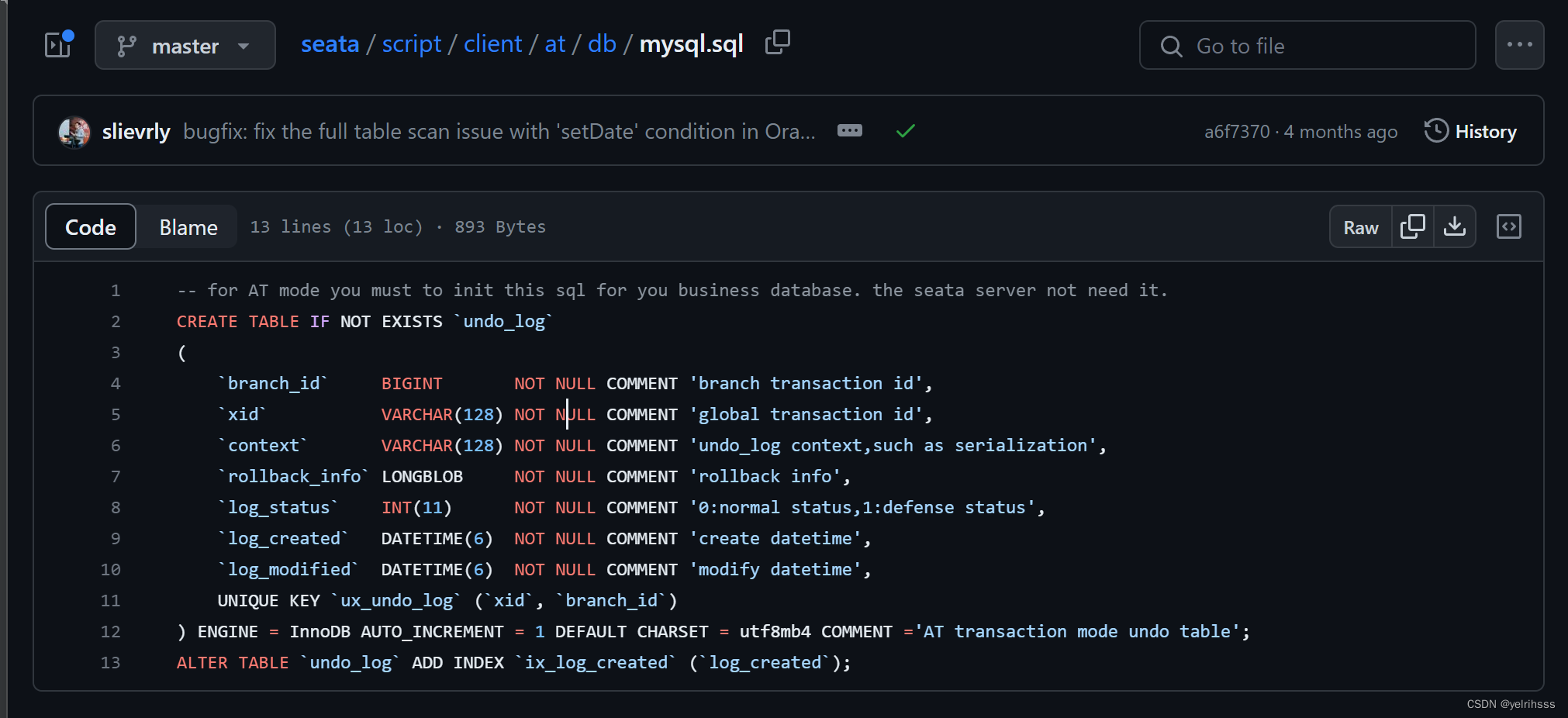




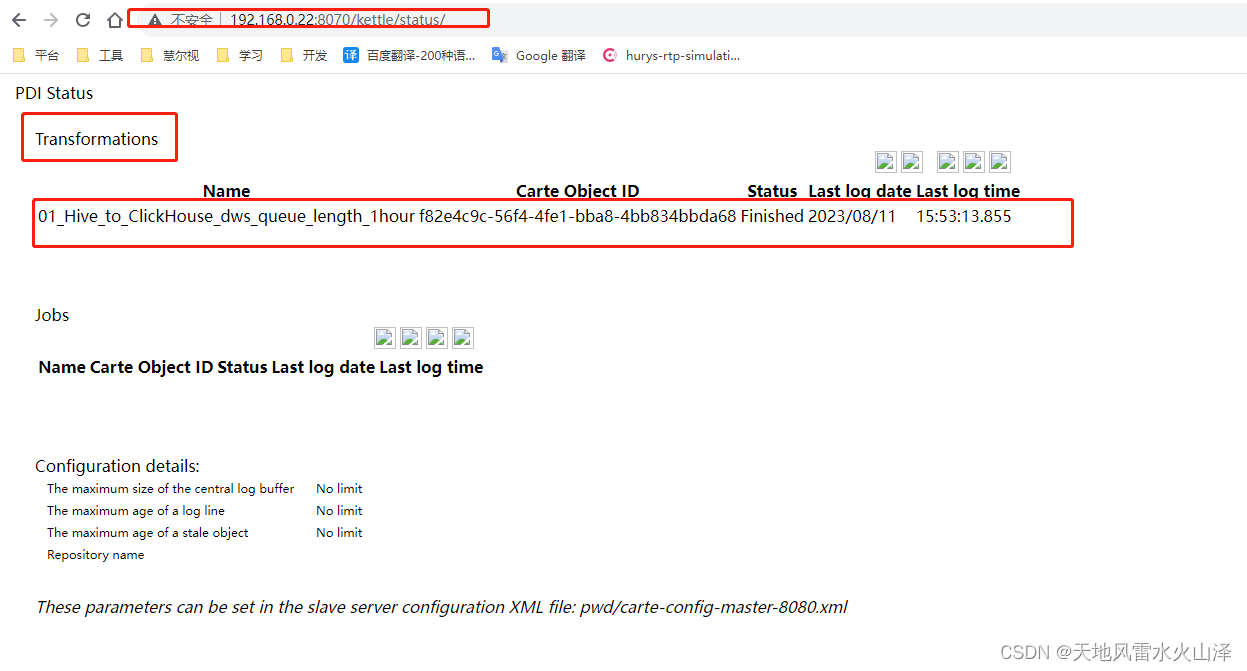

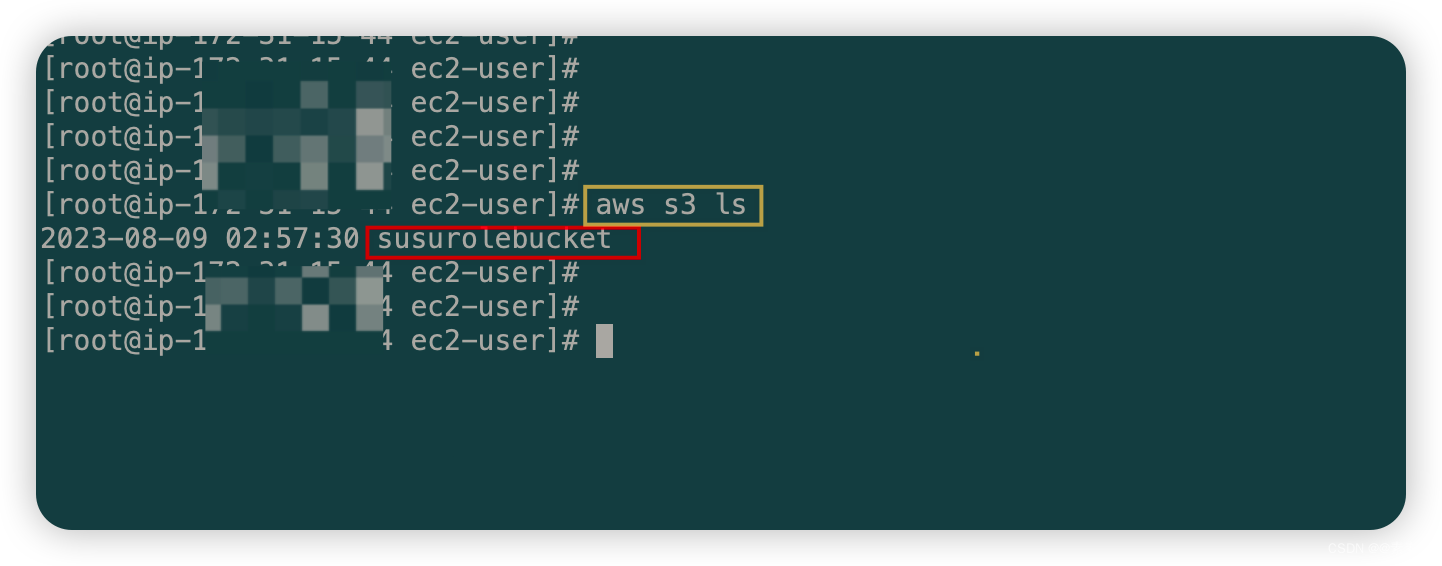
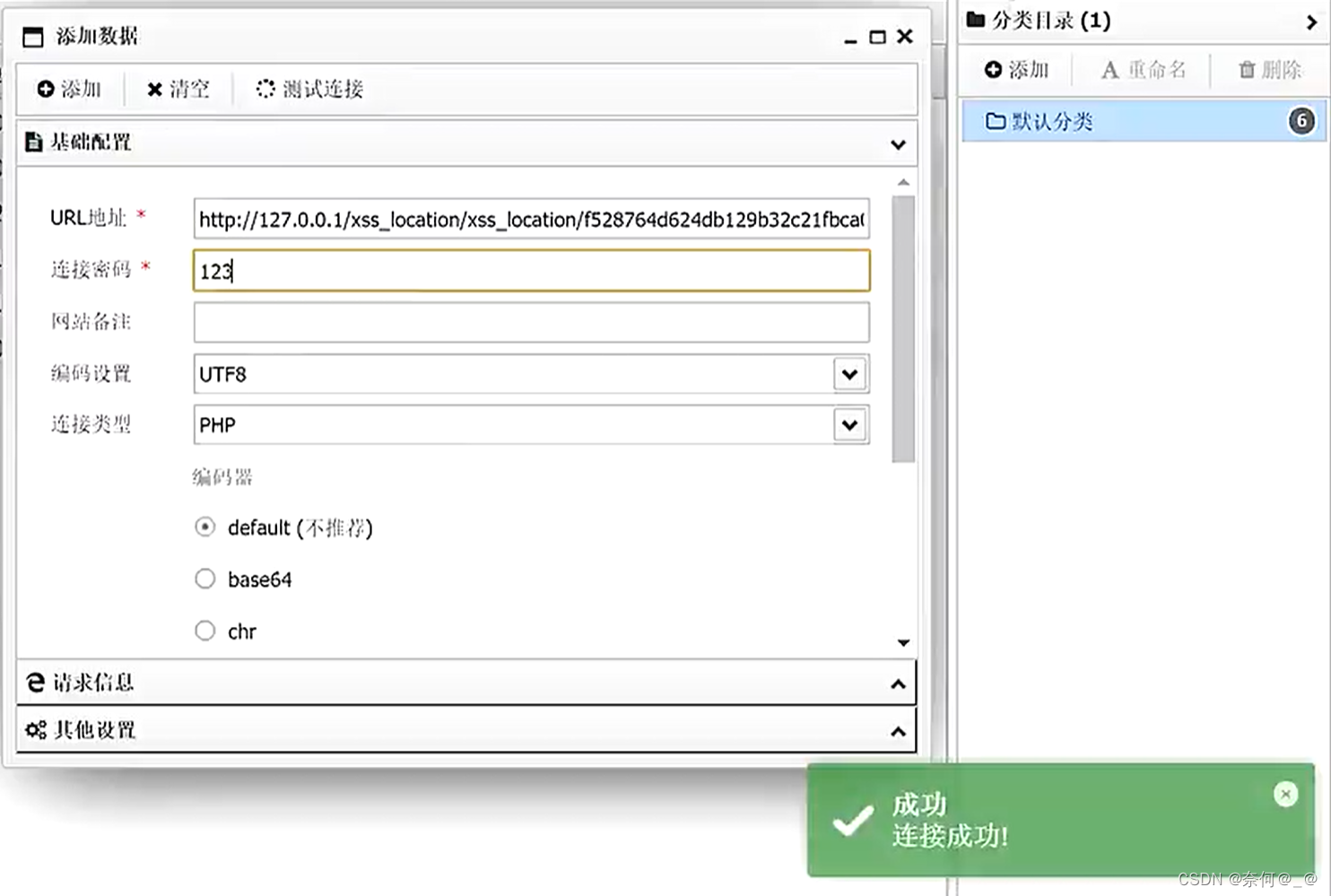


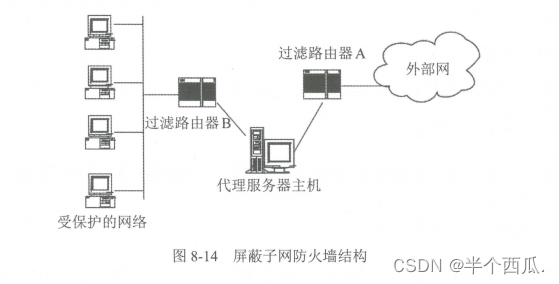
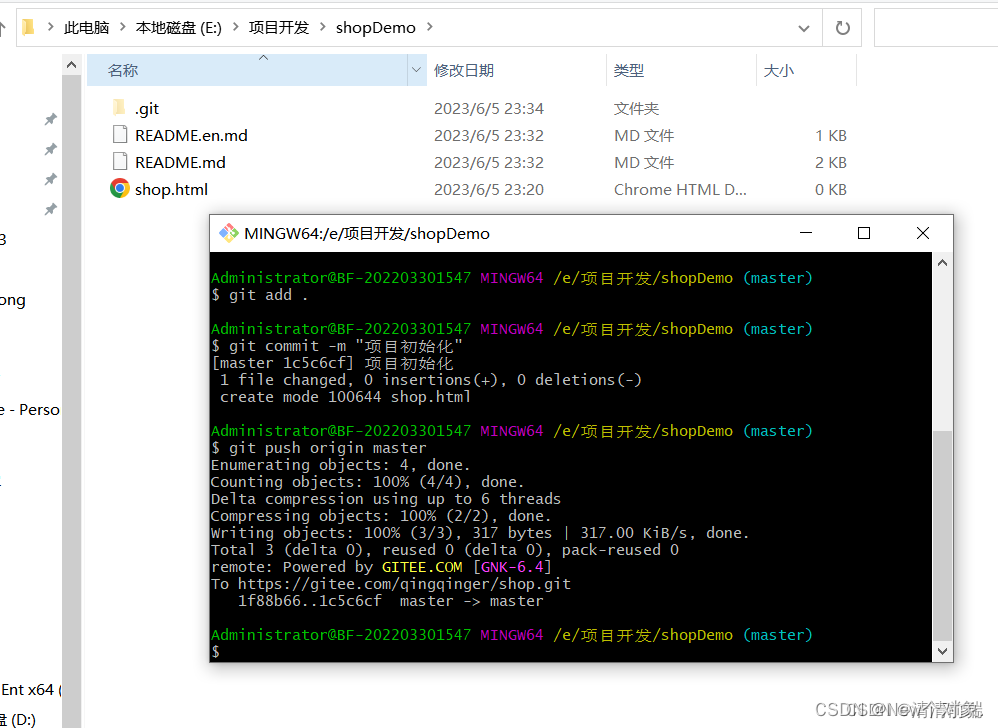

![[保研/考研机试] KY80 进制转换 北京大学复试上机题 C++实现](https://img-blog.csdnimg.cn/img_convert/96b0a331cc17ca77cc1f8645f17f0588.png)

